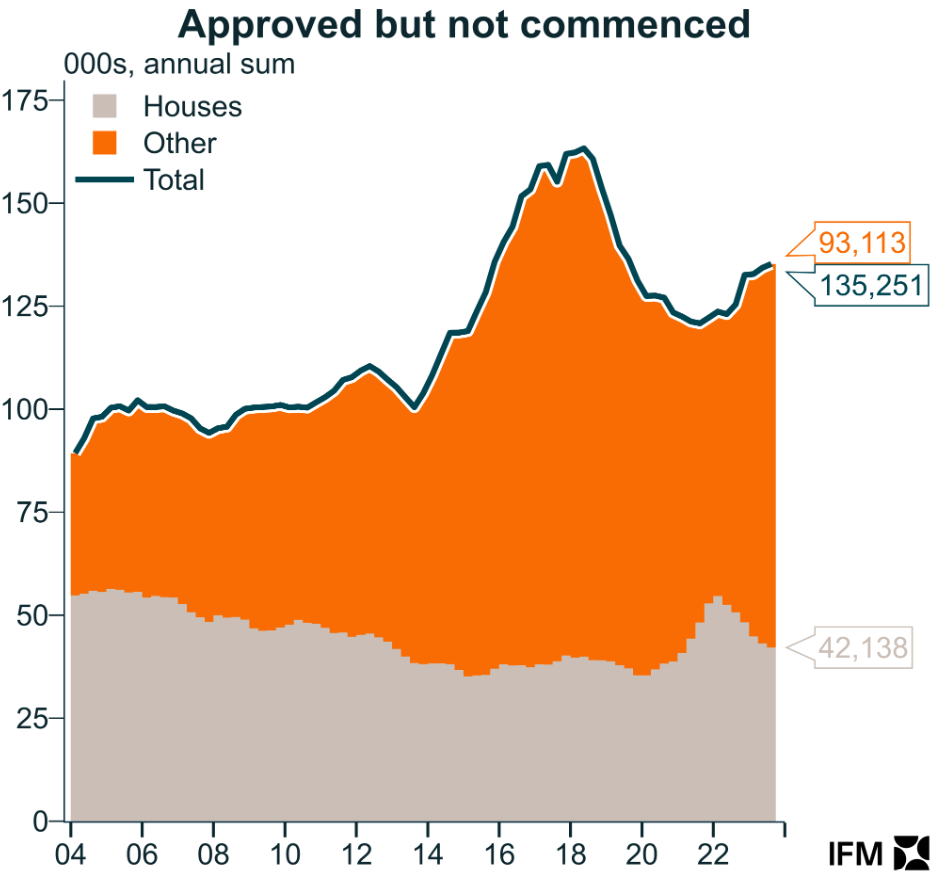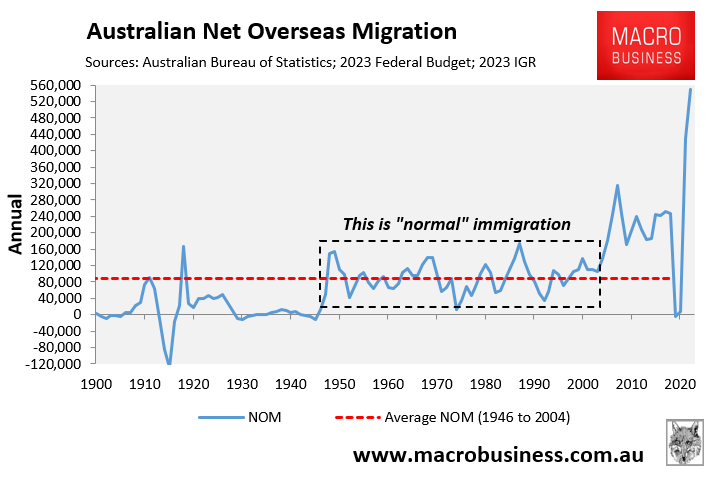YIMBYs, developers and politicians spread the idea that if Australia merely loosened zoning rules and let developers build apartments anywhere, Australia’s housing shortage would be solved.
This myth was demolished in a recent Daily Telegraph article, which reported that “Almost one billion worth of housing in one of Sydney’s most affordable local government areas is yet to be built despite the DAs being approved up to five years ago”:
“The dead zones – also known as “zombie DAs” are located in Liverpool – one of the most affordable local government areas in Sydney”.
“Each has been approved for a residential flat development, including one for a 25-storey complex worth more than $40 million that was lodged in 2016”.
“The DAs represent potential homes for an estimated 1600 families, but are yet to be activated with construction and labour costs, rising interest rates and government taxes blamed for the delays”…
Liverpool Mayor Ned Mannoun said it was taking between five to seven years from DA approval to a “key in the door”.
The following chart from Alex Joiner, chief economist at IFM Investors, highlights the point. It shows that there is a massive pipeline of 135,250 homes that have been approved for construction, but work is yet to commence:

Tens of thousands of home approvals are withering on the vine in Australia because it is not viable for builders to proceed.

Financing costs are high, material costs have soared, and home builders are going bust at an alarming rate.
Moreover, home builders are now competing for workers with state government ‘big build’ infrastructure programs.
Thus, abolishing planning constraints, as advocated, will not solve the “supply” problem.
We must also recognise that flooding the housing market with new supply is not in the developers’ best interests because it affects profitability.
Developers are generally better off financially if they drip-feed supply to maintain high prices and higher margins.
For example, Mirvac kept 157 vacant units at their LIV Munro development in Melbourne for nine months during the biggest rental crisis in history.

Developers profit handsomely from the housing shortage, which will continue unless our governments control land release to force construction and sale.
Short of forcing developers to provide homes, the only sure way to increase housing supply is for governments to create new housing stock directly through public housing programs. However, doing so is very expensive.
A lower-cost, speedier, and more sustainable option is to reduce net overseas migration to historical levels of less than 120,000 per year:

To solve the nation’s housing shortage, net overseas migration must be reduced to a level below the country’s ability to build housing and infrastructure.

Otherwise, population demand will forever exceed supply.

